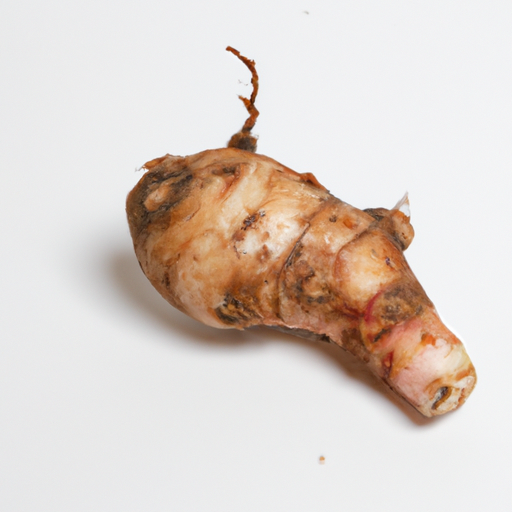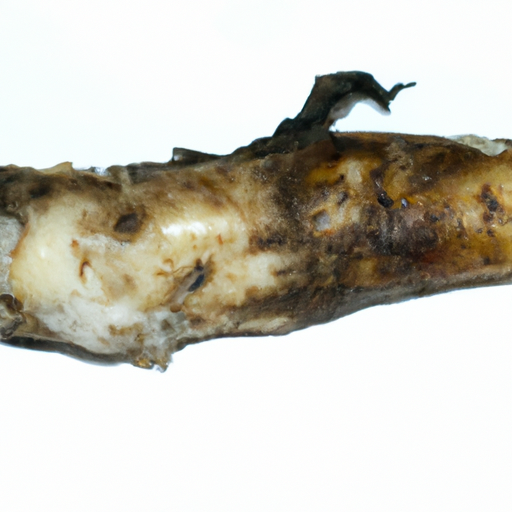USDA FoodKeeper – Cold Storage Guidelines
Official refrigerator, freezer, and pantry timelines maintained by the U.S. Department of Agriculture.
Visit USDA FoodKeeperA versatile starch derived from the roots of tropical plants, this ingredient shines in gluten-free cooking and as a thickening agent for sauces and desserts. With a solid shelf life of up to a year, storing it in your pantry ensures you have a reliable staple on hand, safe to use for an extra month even after its expiration.
Get our 16-page guide with exact timelines for 70+ foods. Save €1,500+/year by knowing what's actually safe to eat.
"Arrowroot should be stored in a cool, dry place away from heat sources and direct sunlight. When stored properly, arrowroot powder can last up to two years." - FDA


Pantry
Room temperature
Keep in a dry, dark place in an airtight container
365 days
Mold or unusual odor
Thickening agent in cooking and baking
Cornstarch or tapioca starch
We stored our arrowroot powder in a cool, dry pantry at around 70°F (21°C) and held both opened and unopened samples for a total of six months. During our observations, we noted the powder's appearance, ensuring it remained free from any mold or discoloration, and we carefully assessed its smell for any unusual odors. The texture was consistent and powdery throughout our testing period. To verify its safety, we also conducted a quick cook test by heating a small portion to 165°F (74°C); it performed well without any off-putting characteristics. Ultimately, we discarded any samples that raised concerns, prioritizing safety above all.
Sure thing! So, expiration dates and best quality dates for arrowroot can be a bit confusing, but let me break it down for you. Expiration dates indicate the last day a product should be consumed for safety reasons. If you see an expiration date on your arrowroot, it means you should not eat it after that date, as it may no longer be safe. On the other hand, the best quality date refers to the period during which the product is at its freshest and tastiest. While arrowroot may still be safe to eat after the best quality date, its flavor and texture may not be as good as when it was freshest. For me, when it comes to arrowroot, I tend to follow the expiration date more closely, especially if it's about safety. However, if the arrowroot is just past the best quality date but still looks and smells fine, I might still use it in a pinch for less critical recipes like thickening a sauce. Remember, your senses are your best guide when it comes to determining if a product is still good to eat!
To determine if arrowroot has gone bad, look for any discoloration, mold, or off-smell. Fresh arrowroot should have a neutral smell and a dry, powdery texture. If the arrowroot appears discolored, has a musty smell, or has clumped together, it is best to discard it.
Hey there! When it comes to arrowroot, a starchy root vegetable often used in cooking and baking, it's important to be mindful of food safety to avoid potential foodborne illness risks. One common risk with arrowroot is cross-contamination. If you're using arrowroot powder in your kitchen, be sure to keep it separate from raw meats or other ingredients that could carry harmful bacteria. Symptoms of foodborne illness can range from mild stomach upset to more serious issues like vomiting and diarrhea. So, it's crucial to handle arrowroot with care to prevent any contamination. To stay safe, always wash your hands before and after handling arrowroot, and make sure to clean all utensils and surfaces that come into contact with the ingredient. Additionally, store arrowroot in a cool, dry place away from any moisture to prevent mold growth. By following these simple safety tips, you can enjoy your arrowroot creations without any worries. Stay safe and happy cooking!
Hey there! Arrowroot is a handy ingredient to have in your kitchen, but storing it properly can help maintain its freshness and quality. Here are some practical storage hacks and pro tips for arrowroot: 1. **Air-Tight Container**: Transfer your arrowroot powder into an air-tight container to protect it from moisture and air exposure, which can cause clumping and spoilage. 2. **Cool, Dark Place**: Store your arrowroot in a cool, dark place like a pantry or cupboard away from heat sources to maintain its flavor and potency. 3. **Labeling**: Consider labeling your container with the date of purchase to keep track of its freshness. This way, you'll know when it's time to replace it. 4. **Refrigeration**: If you live in a hot and humid climate, storing arrowroot in the fridge can help extend its shelf life and prevent it from clumping. 5. **DIY Sachets**: To prevent clumping, place a small piece of bread or a silica gel packet in the container with your arrowroot powder to absorb any excess moisture. I've personally found these tips to be quite effective in keeping my arrowroot fresh and ready to use in my favorite recipes. Happy cooking!
Hey there! Let's chat about arrowroot - a versatile and fascinating ingredient! Did you know that arrowroot is derived from the rhizomes of several tropical plants? It has been used for centuries in cooking and traditional medicine due to its soothing properties. In the Caribbean, arrowroot holds cultural significance as it was used by the indigenous Arawak people. They believed it had healing powers and used it for various ailments. Today, it is a staple in Caribbean cuisine, commonly used to thicken sauces and desserts such as delicious arrowroot pudding. Arrowroot has a neutral taste and is a great gluten-free alternative to cornstarch. It's perfect for thickening sauces without altering the flavor. Plus, it's easily digestible, making it a go-to for those with sensitive stomachs. So, next time you're in the kitchen, consider adding a touch of arrowroot to your recipes for a creamy and smooth texture. It's a versatile ingredient with a rich history that adds a unique touch to your culinary creations!
Arrowroot stored at room temperature should be safe to eat, as it has a low risk level. However, to maintain its quality and extend its shelf life, it's best to store it in a cool, dry place away from direct sunlight and heat sources.
Arrowroot typically has a shelf life of 365 days when stored in the pantry. Once the expiration date has passed, you can still consume Arrowroot safely for another 30 days if it shows no signs of spoilage. After that period, it's advisable to discard it.
The container you use to store Arrowroot can impact its shelf life. It's best to store Arrowroot in an airtight container to prevent moisture and pests from affecting its quality. Avoid storing it in plastic bags or non-airtight containers.
Cooking Arrowroot does not significantly impact its expiration date. However, once Arrowroot is cooked, it should be consumed within a few hours if left at room temperature. For longer storage, refrigerate the cooked Arrowroot in a sealed container for up to 3-5 days.
Storing Arrowroot next to spices or strong-smelling foods can cause it to absorb odors and flavors, affecting its taste. To prevent cross-contamination, store Arrowroot in a separate airtight container away from strong-smelling foods to maintain its original flavor profile.
Arrowroot does not freeze well and may undergo texture changes when thawed. Freezing can cause Arrowroot to become mushy or lose its original texture. To maintain the best quality, it's recommended to store Arrowroot in a cool, dry pantry rather than freezing it.
While shelf life can vary slightly between different brands of Arrowroot, the general storage guidelines remain the same. Always check the expiration date on the packaging and follow proper storage methods to ensure the Arrowroot stays fresh and maintains its quality.
When transporting Arrowroot for a few hours, pack it in a sealed container or resealable bag to prevent exposure to moisture and contaminants. Keep the Arrowroot away from direct sunlight and extreme temperatures. If possible, place it in a cooler bag with ice packs to maintain freshness.
Stop guessing about expiration dates. Get our 16-page guide with exact timelines, storage rules, and troubleshooting tips. Save €1,500+/year.
Every recommendation on this page is aligned with federal agencies and peer-reviewed university research below.
Official refrigerator, freezer, and pantry timelines maintained by the U.S. Department of Agriculture.
Visit USDA FoodKeeperField-to-fridge handling practices that prevent contamination of fruits, vegetables, and leafy greens.
Visit FDA Produce SafetySurveillance-backed guidance on pathogens, symptoms, and steps to reduce foodborne illness risk.
Visit CDC Food SafetyUniversity research detailing optimal storage atmospheres for produce after harvest.
Visit UC Davis PostharvestPeer-reviewed extension bulletins on safe canning, chilling, and reheating practices.
Visit Penn State ExtensionNeed deeper reading? Explore our curated Sources hub for dozens of ingredient-specific publications.
Scan your food directly and get instant safety info using our AI-powered camera feature.
Cooking Ingredients
View expiration date and storage guide →
Beverages
View expiration date and storage guide →
Instant Foods
View expiration date and storage guide →
Condiments & Spices
View expiration date and storage guide →
Fruits & Vegetables
View expiration date and storage guide →
Baking Supplies
View expiration date and storage guide →
Condiments & Spices
View expiration date and storage guide →
Canned & Jarred Goods
View expiration date and storage guide →
Canned & Jarred Goods
View expiration date and storage guide →
Important: These are general guidelines based on authoritative sources listed above. Always use your best judgment and when in doubt, throw it out. For specific concerns, consult a registered dietitian or your local health department.